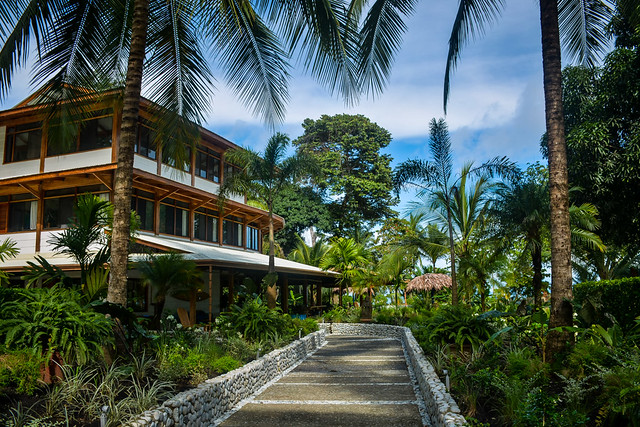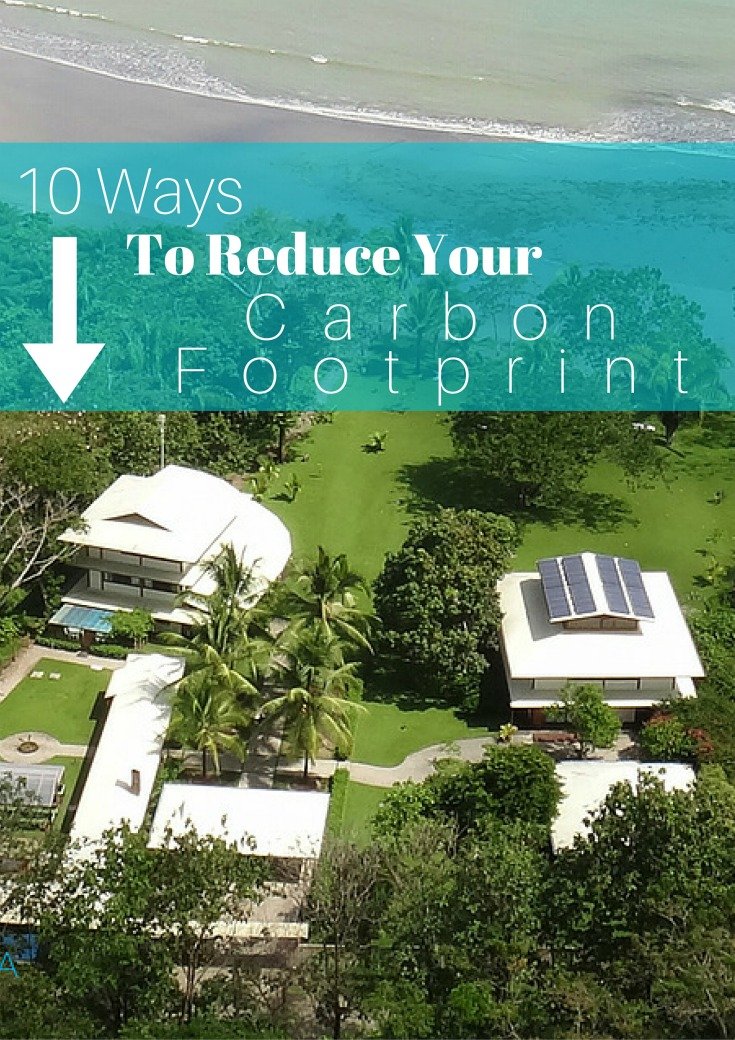We don’t have to turn far these days before seeing or hearing news on another extreme climate event. Extreme weather in the forms of flooding, tornadoes, heat waves, and abnormal storms like the snow and ice that brought the city of Atlanta to a standstill, along with the rest of the southeastern states is an example of changing weather patterns.
According to scientists, a major contributor to our extreme weather is the amount of CO2 (carbon dioxide) we are pumping into the atmosphere. Carbon dioxide is a greenhouse gas produced by human activity and a big player in global warming and radical shifts in weather. The amount of individual and collective carbon emissions is known as our carbon footprint, and with a population 7 billion our daily actions are having huge consequences on the earth’s ecology and climate.
The following list outlines 10 ways to reduce your carbon footprint- steps I took as I transitioned from a life on the northwest coast of Canada to volunteering at an eco-resort in the remote Osa Peninsula of Costa Rica. Costa Rica is known for its environmental vision, policies and leadership, and Blue Osa Yoga Retreat + Spa is making sure to do it’s part to be sustainable and lead the way as a premier eco-retreat in Costa Rica. Though you may not be able to implement all of these things at home, use these tips from Blue Osa for inspiration and take action to reduce your carbon footprint today:
10 Ways to Reduce Your Carbon Footprint
1. Ground Transportation
Alternatives: Walk, Bike, Public Transit, Ride Share, Car Cooperatives & Carbon Friendly Vehicles
This turning point is the opportune time to let go of one of my favorite possessions; my 4 wheel drive, Nissan Pathfinder. As an activist my ownership of this vehicle is a bit of a contradiction but I love the road safety, and the space for travel and it is great for heading out into the wilds of the west coast. The downside is that my SUV consumes a ridiculous amount of gasoline, making my carbon footprint more than twice what is ecologically responsible for an individual. Before flying to Costa Rica, I list my truck on Craigslist and find a wonderful yogi couple living off grid on a local island to hand over the keys to.
2. Air Travel
Is your air carrier carbon neutral?
Air travel is extensive today, as is our choice of airline companies. With a little on-line research I identified Nature Air as a small inter-county airline with a mission to go as green as the country they operate in. Nature Air is the world’s first carbon neutral airline (currently no longer operating), becoming certified by the Costa Rican government in 2004. The airline compensates for 100% of its carbon emissions, taking steps towards sustainability that include using bio-diesel made from used cooking oils to fuel company vehicles.
3. Accommodation
My living space has gone from a 2 story home with 3 bedrooms and 2 bathrooms in a cold climate with a large carbon footprint, to a small off grid cabana in a tropical climate with shared amenities, greatly reducing heating and energy needs.
4. Sustainable Energy Sources
Blue Osa Yoga Retreat + Spa is completely off grid, drawing energy for its 50 guests, staff and volunteers from the sun
5. Landscaping

Designed in harmony with the local jungle and the coastal ecology
6. Laundry
Clothing is washed once a week by staff and naturally dried on a clothesline
7. Grow a Garden
Fruit, herbs and vegetables are produced locally by the gardeners in an on-site organic garden and picked fresh by the Chefs
8. Compost
Organic waste from kitchen and gardening is transformed back into nutrients to feed the soil, seeds and plants.
9. Television
There are no television screens in the jungle, just the beauty of the natural world to stimulate the senses
10. Communication and Electronic Devices
Wireless is restricted to a single location to conserve energy
Like many of us, I am conscious of the changing weather patterns and my impact upon the delicate balance of life on this planet, known as Gaia or Mother Earth. Indigenous peoples lived in harmonious co-existence with nature, embodying a deep understanding of the interwoven relationships that led to health and wholeness, or holiness.
Modern society uses terms like carbon credits and natural capital for citizens, organizations and nations as they strive to become responsible for their carbon footprint. Many companies and nations are falling behind in ecological responsibility and Costa Rica is a nation known for its environmental vision, policies and leadership.
Extreme weather events demonstrate a living system out of balance. Getting creative on ways to reduce our carbon footprint is essential, as humanity currently consumes 30% more of the earth’s bio-capacity than actually exists on the planet, leaving little for the livelihoods of future generations.
Like this post? Pin it for later!

What steps do you take to reduce your carbon footprint?
About the author

Patti is an artist, writer, consultant and speaker on intuition and dreaming new dreams.
Patti grew up on a rural farm listening to stories of dreams, voices of wisdom and mysterious knowings from the women in her family. She spent her adult years leading transformative ecological programs and dedicated the past ten years to working and learning from indigenous peoples. Patti eventually went on to graduate school where she researched and wrote on intuitive leadership. She recently published “The Gift, Intuitive Leadership: Inspiring a New Dream of Earth.”
Find out more about her at: www.intuitiveleadership.ca






